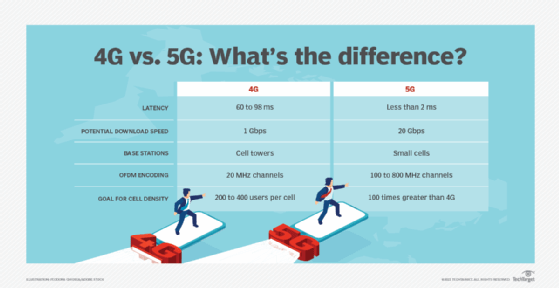
Private LTE networks grow as 5G comes into view
Private LTE networks deliver secure cellular connectivity in localized enterprise or industrial spaces, with private 5G networks and newly available spectrum bands soon to follow.
Private networks are an expanding trend in the wireless space, with private LTE networks growing steadily and 5G variants around the corner.
A private LTE network is a local cellular network that uses micro towers or small cells, as well as core network servers, to support a specific company's secure connectivity in a localized area, independent of cellular service providers.
The ins and outs of private LTE networks
Enterprises, utility organizations and industrial sites have installed private LTE equipment. Uses for private LTE include network optimization for mission-critical applications and enhanced lower latency operations. With private network deployments, enterprises can avoid increasing congestion on public LTE networks.
Airports, mines, oil and gas extraction plants, factories, warehouses and more have already deployed initial private LTE networks. Bad or nonexistent cellular coverage can also lead enterprises to deploy private LTE networks in remote areas for industrial uses.
To operate private LTE networks, enterprises and utilities need access to owned, leased or shared radio spectrum, devices compatible with those frequencies and private subscriber identity module cards. Radio bands for private LTE networks include the unlicensed 5 GHz band and the 3.5 GHz Citizens Broadband Radio Service (CBRS) band in the U.S. The Federal Communications Commission also plans to open the 900 MHz band for unlicensed use in LTE and forthcoming 5G networks.

Since limited commercial services were launched on CBRS in September 2019, Apple, LG Electronics, OnePlus and Samsung launched CBRS-compatible smartphones. Modules, modems and routers that support the 3.5 GHz band are also available.
A glimpse into 5G future
Initial private 5G networks will come relatively soon, as the 3rd Generation Partnership Project finalized its latest 5G New Radio specification, Release 16, in July 2020. The specification supports 5G standalone networks with a 5G core and will enable enterprises to use 5 GHz and 6 GHz unlicensed spectrum for forthcoming private networks.
The CBRS band is also included in the previously non-standalone 5G, which uses a 4G evolved packet core to control the 5G radio network and wouldn't enable carriers to deploy localized, private 5G networks.
Deloitte expects more than 100 companies will start to test private 5G networks by the end of 2020. Full private 5G networks won't be commercially available until at least 2021.






